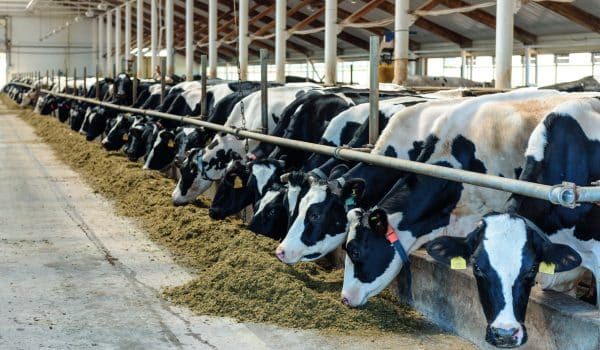A source of sodium without chloride
In animal nutrition, sodium bicarbonate is the main buffer substance. Buffer capacity can be defined as the ability of a solution to counteract pH changes.
In ruminant, optimal ruminal pH range between 6 and 7 in dairy cows. Nevertheless, some diet management allowing to meet high performance dairy cows may lead to subacute ruminal acidosis (SARA). SARA is characterized by a ruminal pH <5.8 during 5.24 hours (Zebeli et al., 2008) and appears when the balance between production, neutralization, and absorption of volatile fatty acid (VFA) is broken.
The use of sodium bicarbonate, due to its properties allows to neutralize the acidity produce during feed ingestion. It has a flash and strong action and is thus recommended in cows having subacute acidosis.
Sodium bicarbonate provides sodium but no chloride ions at the opposite of salt. It is thus commonly used in animal nutrition.
Ions balance in the diet is important to ensure good performance of animals. The dietary Electrolyte Balance (dEB) is one way to express it. It shows the difference between cation (potassium and sodium) which pull the EB up and the anion (chlorine and sulfur) which pull the EB down. dEB = [(Na × 434.98) + (K × 255.74) − (Cl × 282.06)] mEq/kg.
The lower the EB, the more acidic it is. A balanced EB is essential to ensure optimal osmotic pressure and correct glucose transport.


| Appearance | White colour |
| Particule size | Powder |
| Packaging | Bag 25kg, Big Bag 1T, Bulk |